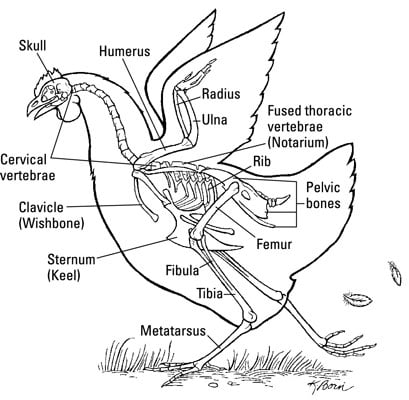
-
Pneumatic: These bones (say it: new-matic) are hollow and connected to the respiratory system via the air sacs. Examples of pneumatic bones are the skull, collar bone (clavicle), pelvis, and bones of the lower back.
-
Medullary: These bones, including the leg bones, ribs, and shoulder blades, serve as a source of stored calcium for the hen to tap into to make strong egg shells. Bone marrow filling the centers of the medullary bones makes red and white blood cells.
Although the chicken’s skeleton implies good flying skills, a chicken’s muscles tell a different story — chickens are better walkers than flyers.
Chicken breast meat is white, because the majority of muscle cells there are the type cut out for short bursts of activity, not long flights. The main type of muscle cells in the dark meat of legs and thighs are meant for sustained effort, such as walking around. Other types of birds that are better flyers than chickens have all dark meat muscle.

